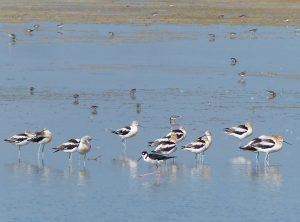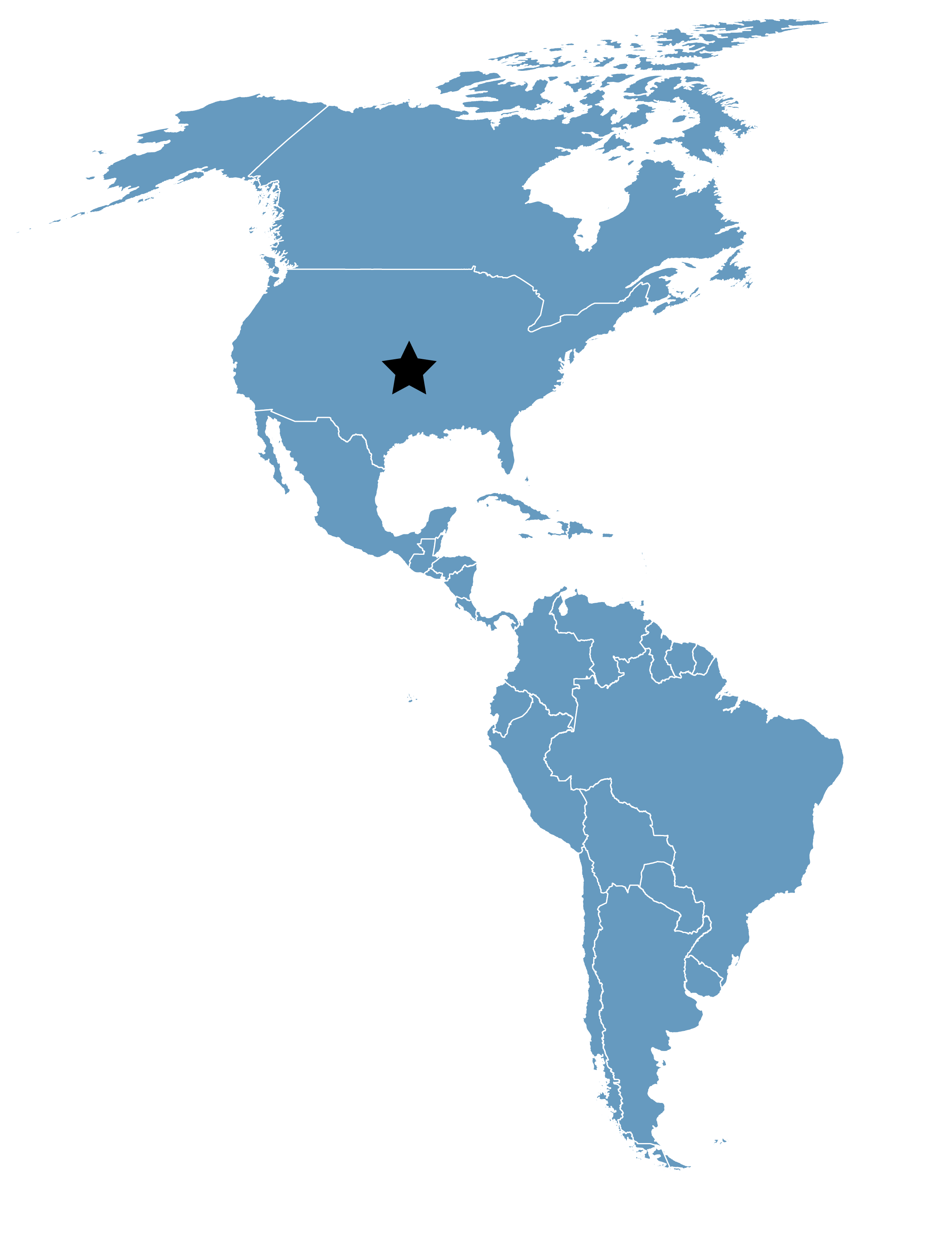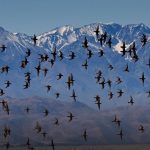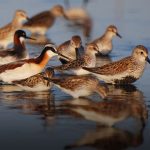Quivira NWR
Location
Kansas, United States
Category
Regional
Basis for Designation
Supports more than 20,000 shorebirds annually.
Size
8,958 hectares (22,135 acres)
Date Designated
February 1994
Site Owner
U.S. Fish and Wildlife Service
Site Partners
Advertising & Communications Western Resources
Towns of Great Bend, Hutchinson, Stafford, Sterling, and St. John.
Overview
Quivira National Wildlife Refuge (NWR) includes a diversity of sand prairie, inland salt marsh, and freshwater wetland habitat. The refuge contains two large (>900 ac each) salt marshes, >30 managed wetland units, and many other wetlands interspersed throughout upland habitat totaling over 7,000 surface acres. The managed wetland units have added infrastructure that allows manipulation of water levels to support waterbird life requirements. Approximately 1,000 acres of high-quality shorebird salt flat habitat mostly occurs on the north end of the refuge. While the inland salt marshes are unaffected by tides, winds help maintain productivity by causing redistribution of mudflat-shallow water resources.
The site provides important habitat for feeding and roosting shorebirds, as well as nesting habitat for American Avocet, Black-necked Stilt, Killdeer, Snowy Plover, and Wilson’s Phalarope. Statewide surveys (2002-2006) indicate >75% of shorebirds counted during spring and fall migration occurred at either nearby Cheyenne Bottoms Wildlife Area or Quivira NWR (Hands 2008). Major migrations occur during spring (mid-April to early June) and fall (August to early October). The days of use over five years (between 1980-1984), which is considered a typical use period, was 305,092. Surveys conducted 1-2 times/month during migration have often reported over 30 shorebird species and 40,000-60,000 individuals annually in recent years. In addition, the refuge supports hundreds of western Snowy Plovers during the breeding season.
The site provides important habitat for several threatened and endangered species, such as the Whooping Crane and interior Least Tern. During fall migration in 2017, >30% (167) of the Aransas-Wood Buffalo population of Whooping Cranes were reported on Quivira NWR.
Current Threats and Management Activities
Quivira NWR is protected by the U.S. Fish and Wildlife Service. Primary land uses in the area are agriculture, oil production, and natural resource-based activities (e.g., environmental education/interpretation, observation, photography, hunting, and fishing).
A major threat is upstream use of water, primarily for crop irrigation, causing depletions in streamflow that greatly influences habitat conditions on the refuge. Also, energy development is a potential threat to environmental conditions. There are currently 17 active oil wells in the area and minor oil spills have occurred. More recent wind farm expansion continues to occur across Kansas.
Management is directed toward providing high-quality habitat for all migratory birds, waterfowl, and shorebirds, and conserving the integrity of biological systems. Areas are periodically treated to sustain ecosystem structure and function using various strategies in place of historic natural disturbances (e.g., prescribed burning, grazing). Water levels in selected wetlands and adjacent meadow and grassland habitat are managed to provide shorebird nesting and foraging habitat.
Resources

For more information about Quivira NWR, visit the Refuge’s home website.









